Lavender Fields in Provence, South of France
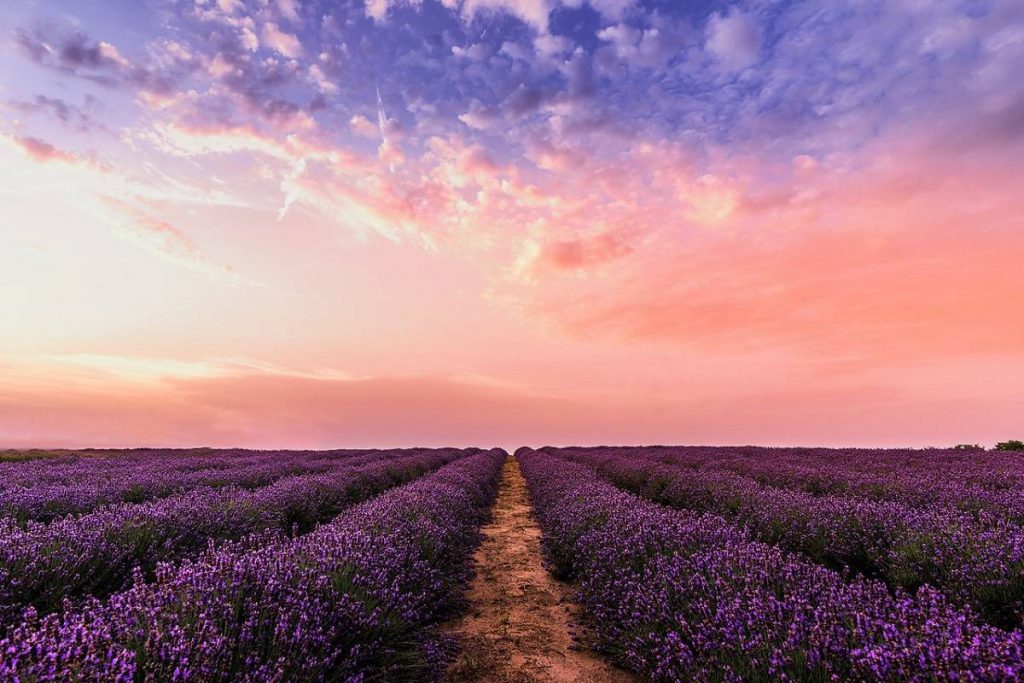
Picture this – an ocean of purple and blue as far as the eye can see. Long lines of lavender fields and lines covering a large expanse of the valleys of Provence in the south of France. The symmetry, the contrast, and the colors combine for what is surely any photographer’s dream.
Discover the best of France’s Lavender Fields
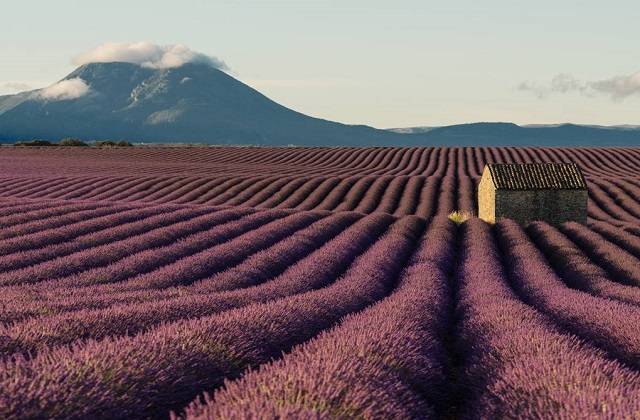
Lavender season in Provence of France is the Japanese cherry blossom mania of Europe. A very calming, delicate fragrance and dusky purple hue of lavender cover the villages and fortified towns.
Where to Find France’s Famous Lavender Fields?
You will find the lavender fields for which you are searching in Provence, in the south of France. Today, it tends to join its neighbors and become the administrative region of Provence-Alpes-Côte d’Azur which spans roughly 12,000 square miles.
The area has a complex history—some of the first European settlements, dating back hundreds of thousands of years. More recently, historically speaking, the area known as Provence was ruled by Celts, Greeks, Romans, Catalans; a revolving series of kings, and eventually the French.
This history has left an indelible mark on the landscape. With the arrival of the Romans in Provence nearly 2,000 years ago came the ubiquitous lavender. Thanks to the nutrient-rich soil and climate, the plant had a perfect environment in which to propagate.
It wasn’t until the late 19th century that industry started to form around lavender, which quickly became synonymous with Provence. Though the plant is peppered around the area. You will not find it in large quantities outside of the farms near Manosque.
A glance at a map of the region will reveal some key landmarks of which you should be aware. The lavender fields are surrounded by the Côte d’Azur to the south; where you will find the cities of Marseille and Nice, Avignon to the west, Gap to the north, and the Alps to the east.
To be more specific, the three main areas where you will find the most photographic spots are in the Luberon Valley, the Sault Plateau, and the Valensole Plateau. This triangle of lavender heaven has, at the center of everything, the southeastern French town of Manosque which is just 88 km (55 miles) north of the largest city in Provence and your likely arrival point: Marseille.
Getting to the Lavender Region
Getting to your destination is easy enough to achieve thanks to France’s excellent infrastructure and inexpensive methods of transportation. Planes, trains, and automobiles will all get you to Provence. No matter how you choose to arrive, we recommend renting a car as it will offer you the most flexibility to see as much of the region at your own pace as possible.
Flying over the Lavender Fields
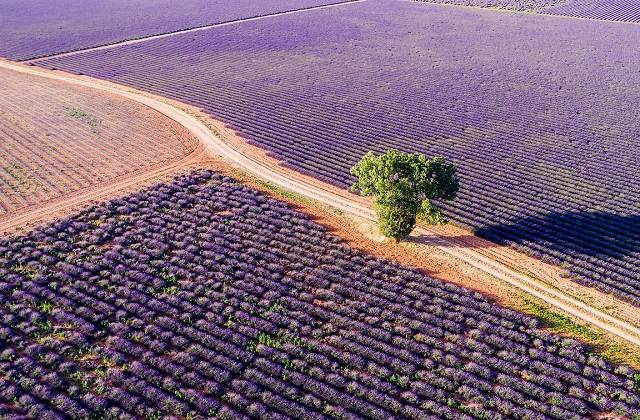
Travelers to Provence have their choice of arriving at one of two major international airports in the region; Nice-Côte d’Azur and Marseille-Provence. Roughly the same number of travelers pass through each of these airports annually and both are world-class destinations.
However, Nice will be a bit further away from where you will be setting up your tripod, so unless you have plans to extend your stay with some beach days, the recommendation is to fly into Marseille-Provence.
If you have the time, stay at least one night in Marseille, as it is a fantastic city on the coast with plenty to do, see, and eat. But if you are following your nose and the lavender smell further north, it will take a drive or train to get you to Manosque.
Arriving by Train
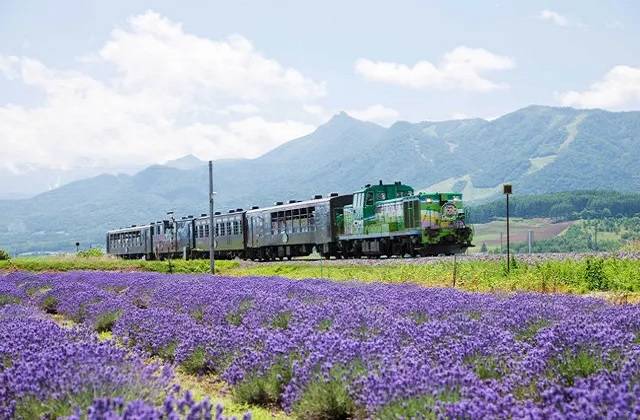
Whether you arrive in Nice or Marseille, the region is conveniently connected by rail and the SNCF operated trails run several times a day between these major cities and the towns of Provence.
Marseille to Manosque is a quick hour and a half journey that costs as little as $25 USD. Nice to Manosque will require a stop in Marseille anyway, with an additional three hours and $40 USD added on top.
Be aware of the station from which your train is departing as there are several major stations in both Marseille and Nice. The central stations are Saint Charles and Gare de Nice-Ville respectively.
If shooting the lavender fields is just a part of your trip to France, then you may find yourself further away from Manosque than Marseille or Nice. A train ride from Paris will cost you just shy of $50 USD and take roughly five hours to travel 385 miles.
Driving through the Lavender Fields
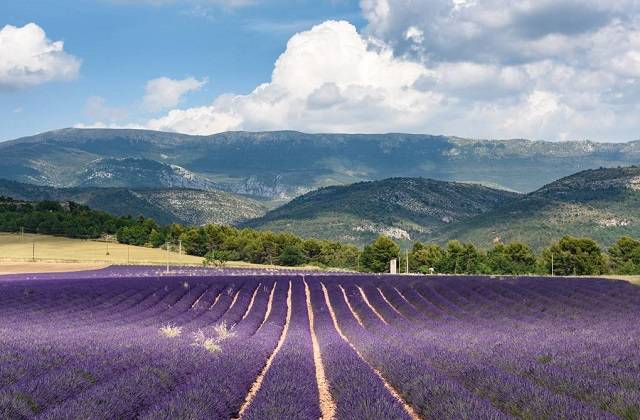
Renting a car is by far the most convenient way to see the lavender fields, though not the least expensive. Road trips tend to be the best way to check the area.
Book your vehicle in advance if you prefer automatic cars (automatic transmission cars are more expensive) as they tend to disappear the quickest, especially during peak lavender season. Rest assured that the French drive on the right side of the road, and you will be able to use your US driver’s license.
From Marseille, you will take A51 the majority of the way, with a short 10-minute drive into Manosque along D907 at exit 18. For reference, D907 becomes D6 (Route de Manosque) when driving away from Manosque to the east, where you will find the closest lavender fields in Valensole.
Pro-Tip
Consider planning your trip ahead, use one of those travel navigation apps. Plan your route, add the POIs to the map, mark the restaurants, and don’t forget to save the best photography spots. Pick an app that helps when using public transportation; or the one with an advanced driving mode when renting a car.
Getting to Lavender Fields from Manosque
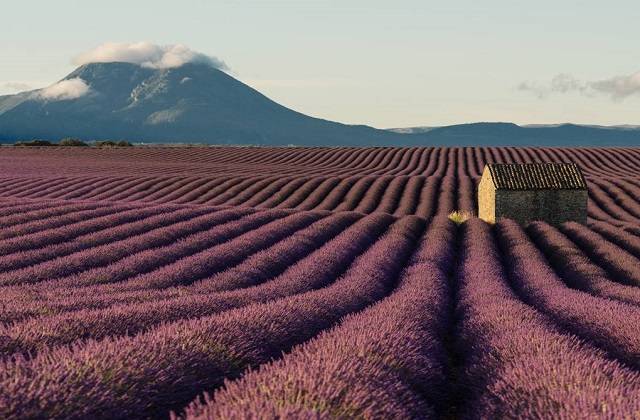
The hard part, which wasn’t that hard, to begin with, was getting to Manosque. Also, use the town as your hub to visit the best lavender fields in Provence.
Valensole is the heart of the region and the closest area to Manosque. Take the D907/D6 from Manosque and drive east. Within 15 minutes, you will start to see the lavender fields. This is where you will be able to capture purple lavender plants in the foreground with views of mountains in the background!
Sault is further north, just above the Parc Naturel Regional du Luberon. The trip will take you approximately an hour across 40 miles along D907 and D5. You will start seeing a higher concentration of lavender fields and farms as soon as you pass Saint-Trinit and the top spots are around you in Sault, Aurel, and Ferrassieres.
Above all, Luberon’s lavender fields are spread out across the area’s communes and towns bisected by D900. So you can find several in Saignon, Bonnieux, and Saint-Pantaleon. Also, the entire Parc Naturel Regional du Luberon is a blessing for lavender photographers.

Pro-Tip
Take your time and explore them at your own pace as each one is unique. Some fields have a perfect alignment, some are on sloping hills, some have a cabin in their center, others have a view of the mountains in the background. No two lavender fields are alike!
Lavender Fields Weather & Timeframe
The region’s climate will affect what you plan to pack (check this guide on what to pack for your road trip) and the timeframe within which you can observe the annual bounty of lavender.
When to visit Lavender Fields?
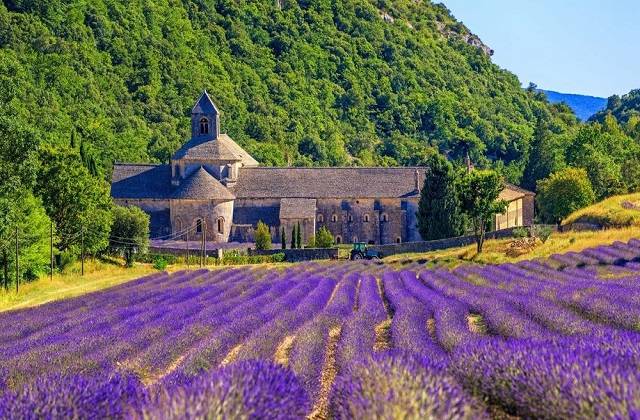
In a glaring case of burying the lede, it is a good time to reveal that lavender season in Provence is short, lasting for just under two months in the summer.
The region’s purples and blues start coming into bloom in mid-June and end with the annual harvest in mid-August. The photography window is even shorter. The best time to shoot the fields is the last week of July or the first week of August, just before Europe’s peak vacation time.
How is the climate on the Lavender Fields?
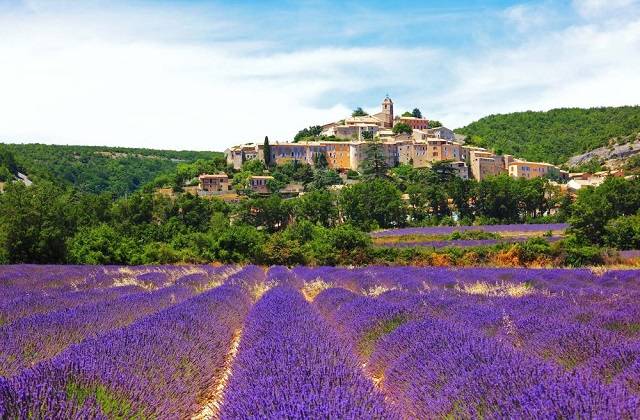
The climate controls the growth and harvesting of lavender. The region receives little rain in the summer, with the sun beating down on the area causing temperatures averaging 86 degrees during this time; perfect conditions for lavender.
The harvest will not vary more than a few days from year to year due to the precise climate that is needed to begin collecting the lavender. Too much rain will delay the harvest and drought will advance it.
While the climate in Provence varies only slightly causing the lavender plants to follow a consistent growth pattern. The perennial plants begin to bloom in the middle of June and fill the air with their aroma. They open up fully in July and are cut once they turn almost completely blue at the start of August.
Best time to take pictures of the Lavender Fields
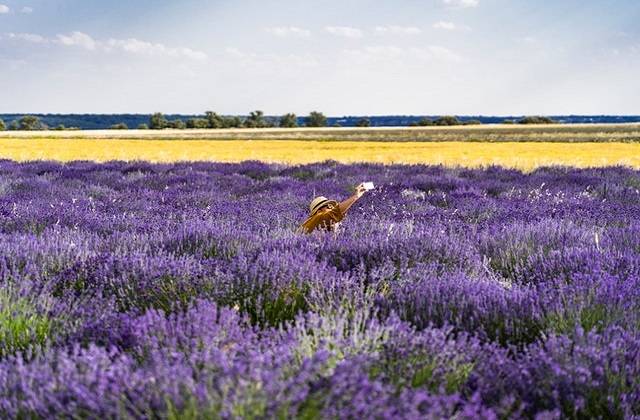
Firstly plan your photos around the golden hour! The sun will set late in the summer, with sunsets typically occurring between 9:00 pm and 9:20 pm in July and rising between 6:00 am and 6:25 am.
Pro-Tip
Certainly and for packing purposes, be sure to bring light clothing for those hot and dry summer days and keep bottled water in your vehicle!
Tips on visiting the Lavender Fields
Planning any trip requires some knowledge to manage the budget, pick the best place to stay, and communicate with the locals. Check the above tips to make sure you plan the perfect trip to Lavender Fields.
Money & Budget
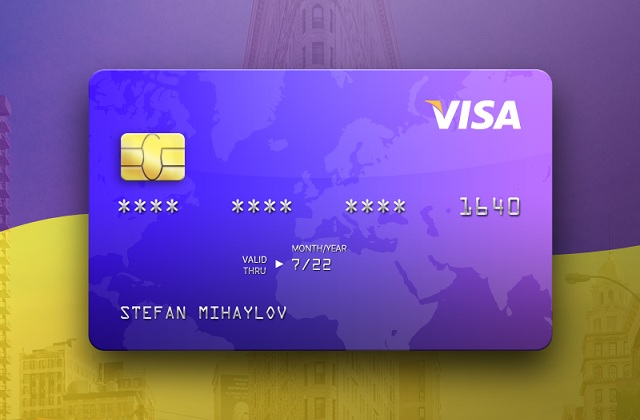
Gone are the days of the French Franc. Since 2002, the official currency of France is the Euro. The approximate exchange rate between the Euro and the United States Dollar is 1 Euro to 1.2 USD.
Currency can be exchanged in major cities and airports, with denominations of €5, €10, €20, €50, €100, €200, and €500 banknotes. (Try not to bring high-value banknotes like the 200 and the 500). Coins range from 1, 2, 5, 10, 20, and 50 cents followed by €1 and €2.
ATMs are common in larger cities and towns, just ask for a distributor. Moreover, credit cards are accepted just about anywhere you plan to eat or rest your head and since many common cards do not have international fees, they are a safe way to pay.
Keep in mind that planning your trip to Lavender Fields will cost more if you don’t plan the trip earlier. Check our guide on the best cost planning apps to make sure you manage and track your expenses.
Where to stay near Lavender Fields?
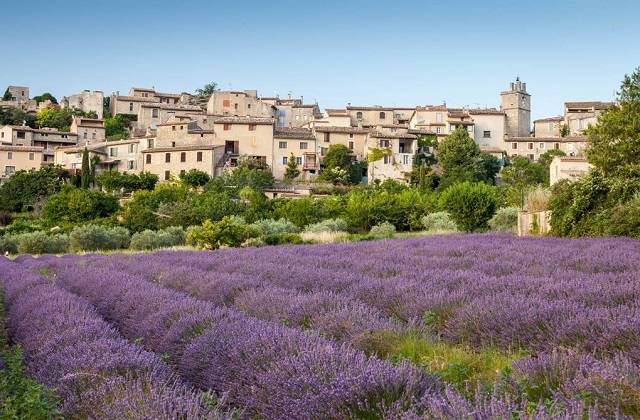
There are some benefits to using Manosque as a hub for your daily visits to the region’s lavender farms. Hotels and apartment rentals are prevalent, with prices ranging from $50 to $150 USD per night on average. Manosque’s relatively large size compared to the region’s communes and towns mean elevated accommodations and swimming pools, which are perfect for those hot days.
Do not hesitate to make stops on your drives from farm to farm and field to field. The towns of Provence are incredibly picturesque and replete with great places to eat. Many of the area’s commune structures have been only lightly renovated on the outside since the middle ages and a walk down their winding alleys is like a visit to the past.
What to eat when in the Provence region?
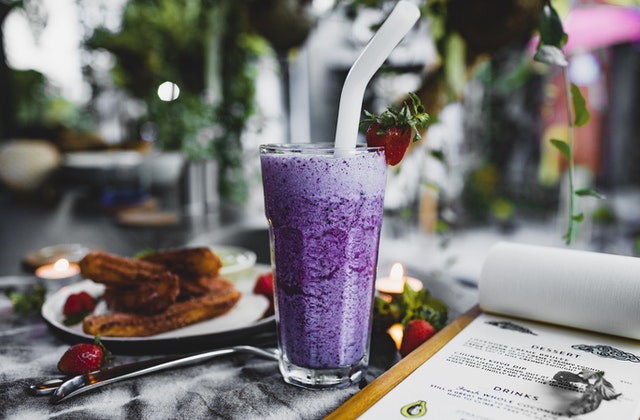
A trip to one of Provence’s restaurants means tasting the traditional fare. Provence is known for its specialties, like the beef stew Daube or the vegetable dish and popular Disney film Ratatouille.
However, let us not forget the delicious desserts infused with the region’s lavender extract. Honey from the region has its own name: Miel de Provence. Honey from Provence typically originates from a single flower and, in many cases, comes from bees that have been frolicking in lavender plants.
Though its origin is contention, nougat is readily available and necessary to sample in large quantities. The chewy treat, made from sugar or honey, nuts, and whipped egg whites is a must-have when visiting Provence.
People and Culture
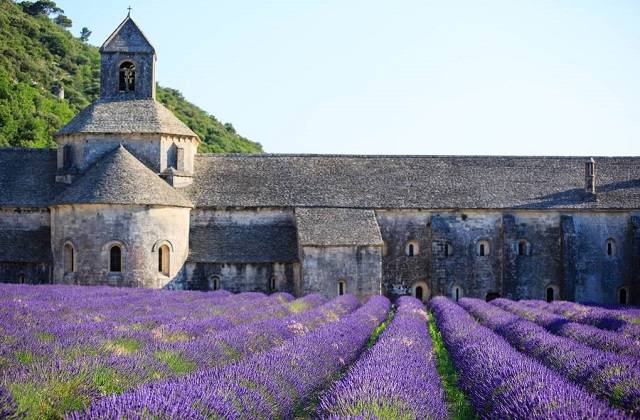
Outside of the major cities, the south of France is quite rural and the towns look almost untouched from centuries ago.
Scattered along the southern coast are ancient Roman ruins, with the best-preserved areas located near Nice and Marseille. The towns where you will stop along your journey between lavender fields are historic and quaint, with populations rarely breaking 10,000 people.
You will find traces of history in the form of chateaus, churches, and abbeys dating back centuries and in varying conditions.
As you may have guessed, the industry here relies on lavender, with many making farming the plant their trade in addition to other agricultural pursuits such as grape growing and winemaking. Here, oils are extracted from lavender and sold globally, with companies like the famous L’Occitane en Provence which is based in Manosque using the plants in their skincare line.
Break the Language barrier
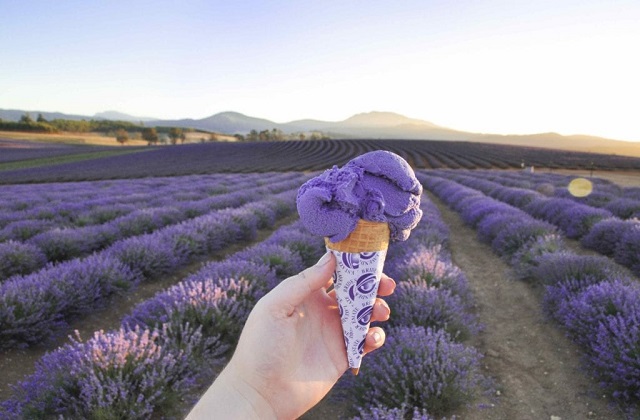
Without question, most everyone with whom you cross paths will speak French. Hotel concierge staff will speak English, though do not expect restaurant staff to assist you in your preferred language if that language is not French. Picking up a few phrases will get you far, and any attempt to speak the language will be appreciated.
You can also use one of the travel translation apps (most of them are offline) to communicate with locals, try to order the best food, or get to your destination using shortcuts in order to discover a non-touristy spot.
The region is also where the endangered language Occitan is spoken. Closest to Catalan, and an official language in Catalonia. It has anywhere from 100,000 to 800,000 speakers in the south of France, in Monaco, and in Italy as well.
About the Author
Matt Colyer is a traveler/hiker who loves outdoor adventures and long trips. Always on the move, and loves to share stories about the exotic and wonderful destinations they come across.
